- Home
- Chopped Strand Mat
Chopped Strand Mat | Fiberglass Matting Material
Chopped Strand Mat fiberglass mat with short strands in resin binder, affordable for molds, repairs, building thickness with polyester resin. Made from randomly oriented glass fibers, it delivers uniform strength in every direction and easily conforms to tight curves and corners in complex molds and parts.
Chopped strand mat is most frequently used with polyester resin has short strands of fibers held together with a resin binder. While Chopped Strand Mat is affordable and easy to use, it does not add significant strength on its own. For applications requiring both strength and thickness, it’s recommended to layer CSM between woven fiberglass fabrics. This layering enhances bonding and overall strength. However, CSM is not compatible with epoxy resin due to the binder requiring styrene to dissolve properly, which is found in polyester.
Simplifying Your Life: Key Functionalities

| Attribute | Details |
|---|---|
| Product Name | Chopped Strand Mat (CSM) |
| Material | 100% Fiberglass (E-Glass, C-Glass) |
| Place of Origin | Hebei, China |
| Brand Names | GangLong Fiberglass |
| Technique | Chopped Strand Fiberglass Mat (CSM), Spreading |
| Applications | FRP molding, Boats, Cars, Panels, Sanitary Ware, Water Tanks, Storage Tanks, Fire Fighting Emergency Rescue |
| Weight Range | 80g/m² - 900g/m² |
| Thickness | 0.43mm - 3mm |
| Glass Type | E-Glass, C-Glass |
| Softness | Soft |
| Surface Treatment | Powder Form, Emulsion Form, Silicon Coated |
| Temperature Resistance | Up to 550°C |
| Length | 450mm - 1040mm |
| Processing Services | Punching, Cutting, Decoiling, Molding, Bending, Welding |
| Packing | 1 - 5 Roll per Carton |
| Features | High Strength, Temperature Resistant, Durable |
| MOQ (Minimum Order Quantity) | 10kg |
News
- Exploring the Benefits of Carbon Fiber Apparel
- How to Work with Carbon Fiber Successfully
- Carbon Fiber Suit: The Future of Lightweight Armor
- Is Carbon Fiber Armor the Future of Protection?
- Why White Carbon Fiber is Popular in Automotive Design
- Transparent Carbon Fiber Sheets Two Sided Gloss Twill
- Epoxy-Compatible Chopped Carbon Fiber Mat
- Carbon Fiber EG Hatch: Upgrade Your Civic Today
- The Benefits of Using Structural Carbon Fibre in Engineering
- How Many Layers of Layered Carbon Fiber Are Needed?
Thickness of Chopped Strand Mat
Chopped Strand Mat (CSM) is a non-woven reinforcement material made from randomly chopped strands of fiberglass that are held together by a binder. This type of fiberglass matting is widely used in various composite manufacturing processes, particularly in the production of fiberglass-reinforced plastics. The thickness of Chopped Strand Mat plays an important role in its application and overall performance in composites. Here’s a detailed explanation of the thickness of Chopped Strand Mat:
Thickness Range
Chopped Strand Mat typically has a thickness range that varies between 0.5 mm to 3 mm. The specific thickness will depend on the weight and the density of the mat as well as the intended use. For example:
- A thinner mat (around 0.5 mm to 1 mm) might be used in applications where a lightweight structure is necessary, such as for cosmetic layers or finishing coats.
- Thicker mats (closer to 2 mm or 3 mm) are often employed when additional strength or impact resistance is needed, such as in structural components or when higher stiffness is required.
Factors Influencing Thickness
Several factors can affect the thickness of the Chopped Strand Mat, including:
- Fiber length and density: Longer strands or higher fiber density often result in a thicker mat.
- Binder content: The amount of binder used to hold the fibers together influences the thickness as well. Higher binder content can increase the thickness and stability of the mat.
- Type of fiberglass used: Different grades of fiberglass may have varying thicknesses, depending on the intended application (e.g., standard E-glass or high-performance glass fibers).
Applications of Different Thicknesses
- Thin Mats (0.5 – 1 mm): These mats are often used in cosmetic layers, providing surface smoothness or adding a lightweight layer of reinforcement to finished products. They can also be used in the production of boat hulls, car bodies, and other composite materials requiring a fine surface finish.
- Medium Mats (1 – 2 mm): Typically used for moderate strength reinforcement, these mats provide a balance between ease of handling and strength. They are suitable for general-purpose applications in industries like automotive, marine, and construction.
- Thicker Mats (2 – 3 mm): These mats are used where high structural strength is needed, such as in parts subjected to heavy loads or impacts. The added thickness enhances the overall mechanical properties of the composite structure.
Benefits of Using CSM with Different Thicknesses
- Thin mats are preferred for surface finishing and improving the cosmetic appearance of composite products, while still providing some reinforcement.
- Medium-thickness mats are versatile and commonly used in a wide range of applications, providing a good balance between weight and structural integrity.
- Thick mats are ideal for improving the mechanical strength, resistance to impact, and overall durability of a composite structure, particularly for high-performance applications.
Chopped Strand Mat Manufacturing and Customization
Chopped Strand Mats can be produced in a variety of thicknesses depending on the needs of the specific application. Manufacturers may also offer customized solutions where the fiber density or the binder content can be adjusted to achieve a desired thickness or performance specification. The thickness of Chopped Strand Mat is an important factor in determining the strength, flexibility, and overall performance of the final composite material. The choice of thickness depends on the application requirements, balancing between strength and weight considerations.
Customization Options for Chopped Strand Mat
At the heart of its popularity is the material’s flexibility for customization. Manufacturers provide tailored solutions to meet specific project needs, including:
- Thickness and Weight: Customizing the mat’s thickness or GSM (grams per square meter) to suit light or heavy-duty applications.
- Resin Compatibility: Producing mats designed for compatibility with specific resins such as polyester, vinylester, or epoxy.
- Roll Sizes: Offering various roll widths and lengths to accommodate different project sizes, from small repairs to large-scale manufacturing.
- Specialized Additives: Including features like improved wet-out times or enhanced resistance to moisture and chemicals.
- Color and Appearance: Options for translucent or tinted finishes based on aesthetic or functional requirements.
Why Choose Customized Chopped Strand Mat?
Customized Chopped Strand Mat ensures optimal performance tailored to your project’s specific requirements. Benefits of choosing customized mats include:
- Enhanced efficiency with material precisely designed for the intended application.
- Cost savings by eliminating the need for additional layers or adjustments.
- Improved durability and compatibility with the selected resin system.
- Reduced wastage and better handling through the right roll size and thickness.
Selecting the right Chopped Strand Mat for your project involves assessing factors such as application type, resin compatibility, and environmental conditions. Manufacturers like us offer expert consultation to help you choose the most suitable product, ensuring a seamless and effective application process.
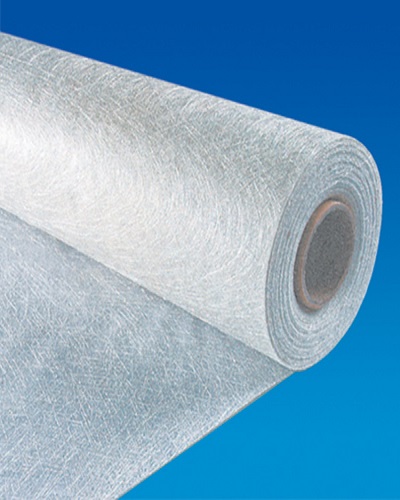
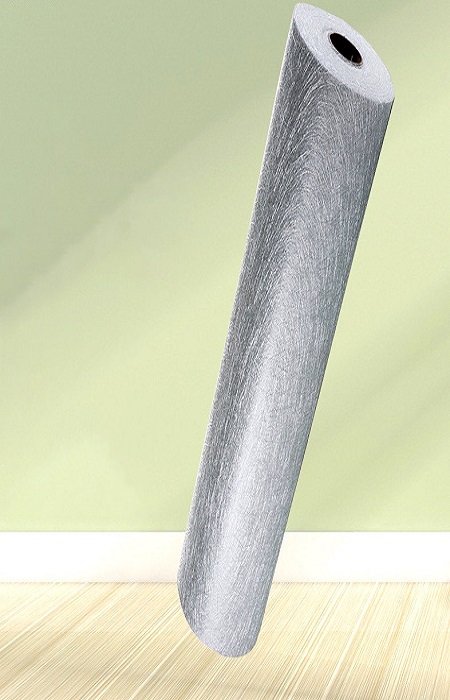
Chopped Strand Mat: Which Weight do You Need?
When choosing the right weight of Chopped Strand Mat (CSM) in oz/yd², the decision largely depends on the intended application, the required strength, and the type of composite part you’re producing. Here’s a breakdown to help you determine which oz/yd² weight you need based on your requirements:
Lightweight CSM (8 oz/yd² to 12 oz/yd²)
These are typically used for surface reinforcement or cosmetic finishes where the primary goal is not structural strength but a smooth, aesthetically pleasing surface.
Applications:
- Surface finishes: Adding smooth layers to molded parts, boats, or automotive panels.
- Cosmetic layers: For parts that will be seen or need a high-quality finish, such as decorative components.
- Light reinforcement: Used in thinner composites where high strength is not a critical factor.
Considerations:
- Easy to handle: Lighter mats are more flexible and easier to shape and saturate with resin.
- Lower strength: Not suitable for heavy-duty structural reinforcement.
Medium Weight CSM (12 oz/yd² to 24 oz/yd²)
This range is commonly used in general-purpose reinforcement. Medium-weight mats strike a balance between handling ease and mechanical properties, making them ideal for a wide range of applications.
Applications:
- General reinforcement: Suitable for many types of structural parts, where moderate strength is needed without adding excessive weight.
- Boat hulls: Common in boat-building, especially for reinforcing structural layers.
- Automotive parts: Used in car bodies, fenders, and other parts requiring moderate reinforcement.
- Construction: Used in structural panels for residential or light commercial buildings.
Considerations:
- Moderate strength: Provides a good balance of strength and flexibility.
- Ease of handling: Slightly more rigid than lighter mats but still manageable during layup.
Heavyweight CSM (24 oz/yd² to 36 oz/yd²)
Heavyweight CSM is used when high structural strength and impact resistance are required. It’s typically used in industrial, automotive, and marine applications where durability is a key concern.
Applications:
- Structural reinforcement: For parts that need to bear loads or endure stress and wear.
- Marine applications: Used for stronger, larger boat hulls or high-performance watercraft.
- Automotive: Reinforcement for high-stress parts such as bumpers, chassis, or other load-bearing components.
- Industrial applications: In tanks, pipes, or high-strength composite structures.
Considerations:
- Higher strength: Adds significantly more reinforcement, making the final product more durable and impact-resistant.
- Heavier and harder to handle: Takes more resin to saturate and may require more skill in processing.
Very Heavyweight CSM (36 oz/yd² and above)
Ultra-heavy mats are designed for applications where the primary concern is maximum reinforcement, and the part will undergo significant stress, impact, or load.
Applications:
- High-strength industrial parts: Used in heavy-duty applications like large machinery, construction equipment, or offshore platforms.
- Marine and offshore: For large, heavily reinforced boat hulls, tanks, and other large composite structures.
- Aerospace: In some specialized aerospace parts or other advanced composite applications.
Considerations:
- Maximum reinforcement: Offers the highest mechanical properties, including tensile and impact strength.
- Difficult to handle: Requires more resin, more processing time, and skilled labor to lay up effectively.
Chopped Strand Mat Used With Polyester Resin
Chopped Strand Mat (CSM) is commonly used in conjunction with polyester resin in the production of fiberglass-reinforced composite materials. The combination of CSM and polyester resin is widely used in various industries such as marine, automotive, construction, and more. Here’s a detailed look at how CSM is used with polyester resin, including the benefits, application methods, and considerations:
What is Polyester Resin?
Polyester resin is a synthetic resin made from a combination of polyols and organic acids, most commonly unsaturated polyester. When combined with a hardener (usually MEKP – methyl ethyl ketone peroxide), polyester resin undergoes a chemical reaction that causes it to cure and harden into a solid plastic material. Polyester resins are widely used because of their:
- Cost-effectiveness: Polyester resins are relatively inexpensive compared to other resin systems like epoxy.
- Ease of use: Polyester resin is easy to work with and cures quickly.
- Good mechanical properties: It offers good strength, rigidity, and impact resistance when used with fiber reinforcements like Chopped Strand Mat (CSM).
Benefits of Using CSM with Polyester Resin
- Strength and Durability: Polyester resin impregnates the glass fibers in CSM to form a strong, rigid composite material. This provides the final product with good tensile strength, flexural strength, and impact resistance.
- Good Surface Finish: Polyester resin provides a smooth, glossy finish, especially when used with lighter weights of CSM, making it ideal for aesthetic applications.
- Cost-Effectiveness: Polyester resin is one of the most economical resin choices, and CSM is typically less expensive than other reinforcements like woven fabrics or unidirectional tapes.
- Quick Curing Time: Polyester resin cures faster than other resins (like epoxy), allowing for faster production and turnover times in manufacturing.
- Ease of Application: Polyester resin is easy to apply and has good wetting properties, ensuring that it penetrates and bonds well with the CSM fibers.
Application Process
The process for using Chopped Strand Mat (CSM) with polyester resin generally involves the following steps:
Preparation
Clean the mold or surface thoroughly, removing dust, grease, or oil. Apply mold release wax if needed for easier demolding. Cut the Chopped Strand Mat (CSM) to the required size according to the project’s specifications. Proper preparation ensures better resin bonding, smooth curing, and easy part removal, reducing defects and saving time during later stages of the fiberglass lamination process.
Mixing the Resin
Combine polyester resin with MEKP catalyst at 1–2% by weight, following manufacturer instructions. Mix thoroughly but avoid excessive air bubbles. Be mindful of the limited working time—polyester resin cures quickly, often within minutes. Prepare only the amount you can apply within the pot life to ensure proper wet-out and avoid wasted material during the lamination process.
Laying Down the Mat
Apply a layer of resin to the mold or surface using a brush, roller, or spray gun. Place the CSM over the wet resin and press gently to ensure full contact. Add more resin as needed to saturate fibers. Continue layering CSM and resin, rolling each layer to remove air bubbles, ensuring uniform saturation and strong bonding between layers for structural integrity.
Curing
Allow the laminate to cure undisturbed. At room temperature, polyester resin typically cures in 1–2 hours. Cure time varies with temperature, layer thickness, and resin type. Heat can accelerate curing, but avoid excessive temperatures. For thicker parts, optional post-curing can improve mechanical properties, strength, and heat resistance, especially for components subject to heavy loads or high-stress environments.
Demolding and Finishing
Once fully cured, carefully remove the part from the mold to avoid damage. Trim excess material, sand rough edges, and perform additional finishing as required, such as painting or polishing. Proper finishing improves appearance and surface smoothness while preparing the part for functional use, whether in marine, automotive, or structural fiberglass applications.
Considerations When Using CSM with Polyester Resin
- Ventilation and Safety: Polyester resin and its catalyst (MEKP) release fumes during the curing process, so ensure that the workspace is well-ventilated and that proper personal protective equipment (PPE) is used (gloves, respirators, goggles).
- Exothermic Reaction: Polyester resin undergoes an exothermic reaction when curing (it generates heat). Ensure that the application area can dissipate heat, especially for thicker layers or large parts.
- Resin Saturation: Proper resin saturation of the CSM is essential for achieving good strength. Insufficient resin can result in weak spots, while excessive resin can add unnecessary weight.
- Gel Coat: For visible parts (like boat hulls or automotive panels), a gel coat may be applied to provide a glossy, smooth surface finish and additional protection.
Using Chopped Strand Mat (CSM) with polyester resin is an effective and cost-efficient method for producing a variety of fiberglass-reinforced composite materials. It offers good strength and durability for applications in industries like marine, automotive, construction, and industrial equipment. By following proper application procedures and safety precautions, CSM and polyester resin can be combined to create high-performance, lightweight, and cost-effective composite structures.
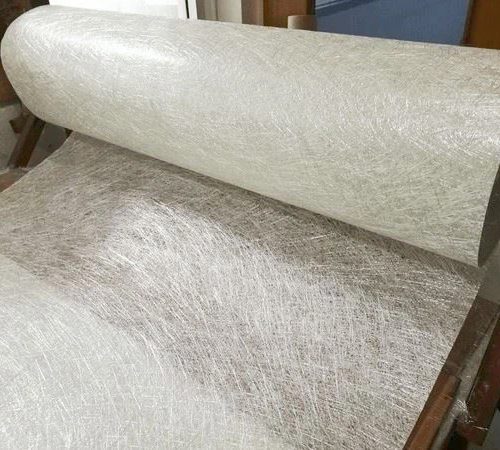
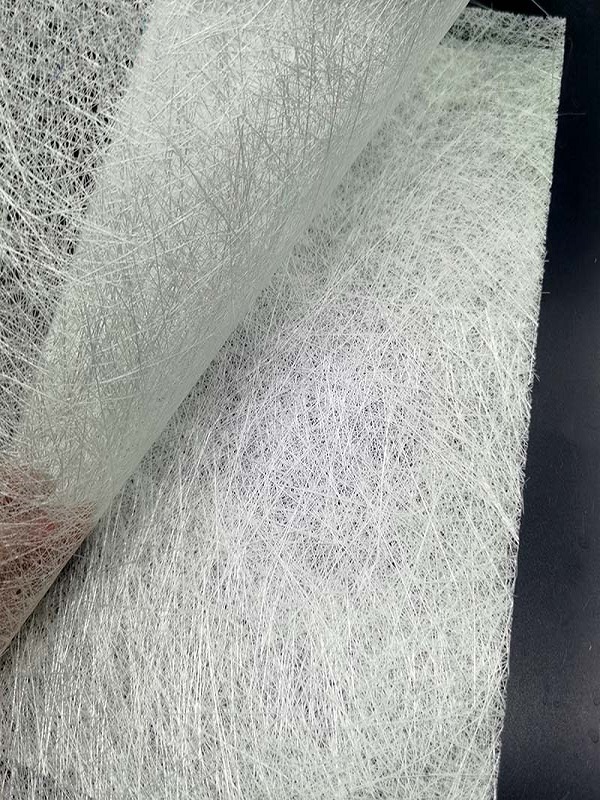
Chopped Strand Mat Price
The price of Chopped Strand Mat (CSM) can vary depending on several key factors. These include the weight of the mat (measured in grams per square meter, or GSM), the dimensions of the roll (such as width and length), the supplier or manufacturer, and any bulk purchasing options available.
Weight of the Chopped Strand Mat (GSM)
The mat’s GSM strongly drives price because heavier mats contain more fiberglass. A 300 GSM mat might cost around $0.50 per square meter, while 450 to 600 GSM options often range between $2.00 and $3.00 per square meter. Higher weights improve strength, stiffness, and durability, suiting structural layers or demanding repairs. Lighter weights suit cosmetic skins or quick builds. Choose GSM by required performance, laminate thickness, and budget constraints carefully.
Dimensions of the Roll (Length and Width)
Roll dimensions influence unit pricing and logistics. Wider and longer rolls typically reduce cost per square meter by improving production efficiency and lowering handling overhead. Common widths span 50 centimeters to 1.5 meters, with lengths from 50 meters to over 100 meters. However, larger rolls require higher upfront spend and more storage space. Smaller rolls cost more for convenience but simplify transport, cutting waste for prototypes, repairs, and intermittent jobs.
Supplier and Manufacturer
Prices differ across suppliers because of scale, automation, resin chemistry, glass sourcing, and overhead. High-volume manufacturers usually quote lower rates and steadier lead times. Smaller producers may offer custom widths or quick turnarounds at a premium. Always collect comparable quotes, including GSM, width, length, binder type, and MOQ. Evaluate delivery terms, quality certifications, and defect policies. Building a preferred-supplier agreement can stabilize pricing and prioritize capacity during tight markets periods.
Price Range
Typical CSM pricing spans $0.50 to $3.00 per square meter, driven by GSM, roll size, supplier scale, and special treatments. Standard 1.5 oz (45 g/m2) mats land between $1.00 and $1.50 per square meter. Heavier 3 oz (90 g/m2) options commonly range from $2.00 to $3.00 per square meter. Specialty variants—UV-resistant, fire-retardant, or higher-strength—cost more due to additives, binder changes, tighter tolerances, or enhanced process controls.
Bulk Purchasing Discounts
Volume commitments typically unlock 10% to 30% discounts versus spot buys. Ordering full pallets or container loads reduces production changeovers and freight cost per square meter. Long-term contracts can secure price breaks, prioritized allocations, and stable lead times. When negotiating, bundle multiple GSMs, widths, and delivery windows to improve utilization for the supplier. Compare INCOTERMS, payment terms, surcharges, and rebate structures. Track realized savings against forecasts to validate negotiated benefits.
Comparing CSM to Other Fiberglass Products
CSM is cheaper than woven roving or continuous filament mats because its manufacturing is simpler and faster. Woven roving often runs $2.00 to $4.00 per square meter; continuous filament mats may cost $3.00 to $5.00 per square meter. However, those alternatives deliver higher directional strength or surface finish in specific laminates. Select material by load path, print-through tolerance, resin choice, process method, and total lifecycle cost, not sticker price alone.
Fiberglass Chopped Strand Mat Roll
Product Details
Fiberglass Chopped Strand Mat (CSM) rolls are versatile materials used in a wide variety of applications, offering a flexible and cost-effective solution for reinforcement in composite manufacturing. The product is available in various sizes, weights, and lengths to meet the specific needs of different industries, including marine, automotive, construction, and manufacturing of FRP (Fiberglass Reinforced Plastic) components.
Common Roll Sizes
Widths:
- 38 inches (approx. 96 cm)
- 50 inches (approx. 127 cm)
- 60 inches (approx. 152 cm)
These widths are standard in the industry and offer flexibility depending on the application, allowing for efficient usage in both large and small projects.
Lengths:
Rolls typically range from 50 yards (approx. 45 meters) to 100 yards (approx. 91 meters). The length of the roll can influence the cost per square meter, with larger rolls often being more economical in the long term.
Advantages of Fiberglass Chopped Strand Mat Rolls
Versatility & Conformability
Chopped Strand Mat’s random fiber orientation allows it to adapt to complex shapes and curves. This makes it ideal for molding and reinforcement processes where intricate designs are required. Its ability to conform without distortion provides flexibility across many industries, from marine to automotive, ensuring smooth coverage and consistent structural reinforcement even on challenging, contoured surfaces.
Ease of Application
CSM is lightweight, easy to cut, and simple to lay onto molds or surfaces. Its random fiber pattern molds well to irregular shapes, and it quickly absorbs resin for hand lay-up or open-mold processes. This ease of handling speeds up production, reduces labor, and ensures consistent quality, making it highly practical for both small repairs and large-scale manufacturing.
Compatibility with Various Resins
CSM works with polyester, vinyl ester, and epoxy resins, allowing wide industry use. Its high absorbency ensures even resin distribution for a strong bond. This compatibility enhances production flexibility, letting manufacturers choose resin types that match specific strength, durability, or environmental resistance requirements, whether in marine, automotive, construction, or industrial applications.
Cost-Effective Solution
CSM is more affordable than woven roving or continuous filament mats due to simpler production. It’s ideal for large-volume projects or budget-sensitive jobs while maintaining performance. This cost efficiency, combined with versatility, makes it a go-to choice for industries seeking reliable reinforcement without excessive expense, from small workshops to mass manufacturing.
Strength and Durability
Lightweight yet strong, CSM offers impressive reinforcement when resin-bound. Heavier mats like 2 oz/yd² or 3 oz/yd² provide added strength for high-demand uses such as boat hulls, automotive parts, and structural panels. Its durability ensures long-lasting performance, even in challenging environments requiring impact resistance and consistent load-bearing capability.
Flexibility for Small and Large-Scale Projects
Available in various sizes, weights, and lengths, CSM fits both DIY repairs and industrial production. It’s equally effective for quick fixes or mass production of panels, molds, and components. This adaptability makes it suitable for any scale, ensuring that projects—big or small—benefit from the same reliable reinforcement qualities.
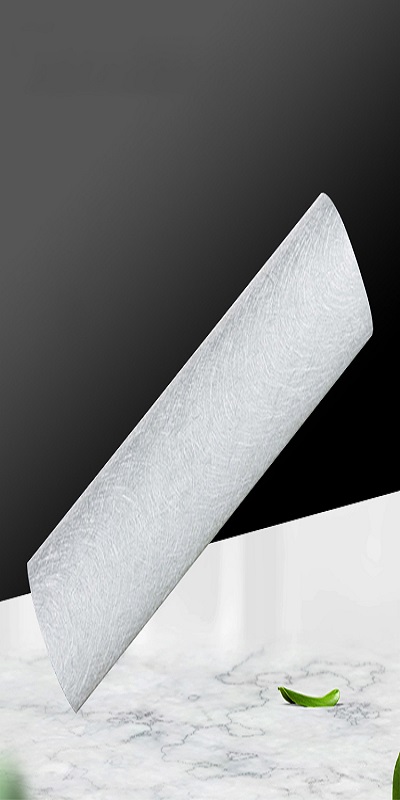
Thank you for your interest in our products. To receive our pricelist or for any inquiries, please fill out the form below. We will get back to you within 24 hours.
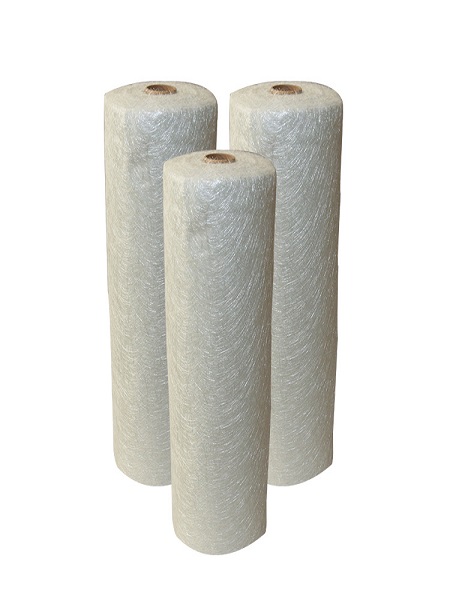
Chopped Strand Mat Uses
Chopped Strand Mat (CSM) is one of the most widely used materials in the fiberglass reinforcement industry due to its versatility, ease of application, and cost-effectiveness. Its applications span a wide range of industries, including marine, automotive, construction, and manufacturing of recreational products. Below is a detailed overview of the common uses of Chopped Strand Mat across different sectors.
Marine Industry
Chopped Strand Mat (CSM) is widely used for boat hulls, decks, and marine parts. It conforms to complex curves and bonds well with polyester or vinyl ester resins, offering strength, durability, and corrosion resistance. From fishing boats to yachts, CSM’s random fiber layout reinforces laminates without altering shape, ensuring lightweight yet impact-resistant marine structures ideal for harsh water environments.
Automotive Industry
In automotive manufacturing, CSM forms body panels, bumpers, and interior components. It offers lightweight strength, boosting fuel efficiency and performance while retaining crashworthiness. Cost-effective for high or low production volumes, it shapes easily into complex parts. Used for dashboards, door panels, and underbody parts, it reduces vehicle weight while providing durability and resistance against impact, corrosion, and weathering.
Construction and Building
CSM strengthens concrete, preventing cracks and enhancing tensile strength. In Fiberglass Reinforced Concrete, it resists corrosion, ideal for coastal or industrial sites. It’s used in panels for facades, roofing, and cladding—lightweight and weather-resistant. Also found in insulation products, CSM boosts thermal resistance. Reinforced fiberglass pipes offer corrosion resistance for water, chemical, and industrial transport, outperforming traditional steel in harsh environments.
Recreational Products
CSM reinforces surfboards, skis, snowboards, and sports gear, combining lightness with strength. It resists wear from water, UV, and physical stress. In RV manufacturing, it’s used for body panels, roofs, and interiors, reducing overall weight while providing solid structure. Ideal for products requiring durability and flexibility, CSM ensures performance and longevity in recreational equipment across water, snow, and road use.
Industrial and Manufacturing Applications
CSM shapes molded composite parts, tools, and precision molds for automotive and aerospace. Its conformity to complex forms and thermal stability make it ideal for tooling. Fiberglass electrical enclosures made with CSM are non-conductive, heat-resistant, and durable, suitable for energy, telecom, and manufacturing. These applications leverage CSM’s reliability for industrial strength and adaptability in varied production processes.
Other Niche Applications
In renewable energy, CSM reinforces wind turbine blades—light yet strong for high wind resistance. It’s also key in water treatment, used in tanks, pipes, and filtration systems needing chemical resistance and durability. These niche uses highlight CSM’s adaptability, offering high performance in demanding conditions where strength, weight savings, and environmental resilience are critical to long-term operation.
CHOPPED STRAND MAT HS Code
Definition
The Harmonized System (HS) Code for Chopped Strand Mat is a standardized numerical code used globally to classify products for international trade. Specifically, Chopped Strand Mat is typically classified under HS Code 7019.51, which covers “Glass fiber mats, including chopped strand mats, for reinforcing plastics.” This code ensures that Chopped Strand Mat is correctly identified and categorized in trade documentation, facilitating smooth customs processes and accurate tariff application. The HS Code is essential for harmonizing product descriptions and ensuring consistent classification across borders.
Importance
Understanding the HS Code for Chopped Strand Mat is crucial for businesses engaged in the import and export of fiberglass products. Proper use of the HS Code helps in the accurate calculation of duties and taxes, ensuring compliance with international trade regulations. It also aids in streamlining the customs clearance process, reducing the risk of delays or penalties. For suppliers and manufacturers, knowing the correct HS Code enables efficient management of inventory and facilitates better communication with international partners. Additionally, accurate classification supports effective market analysis and pricing strategies by providing insights into trade patterns and regulatory requirements.
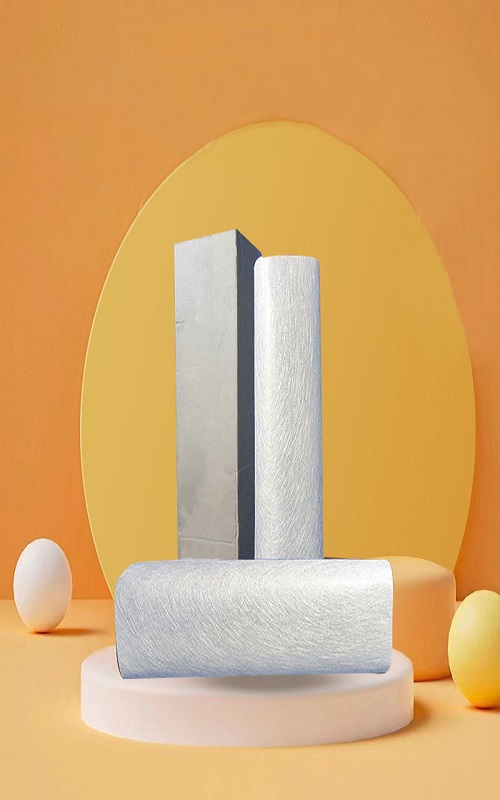
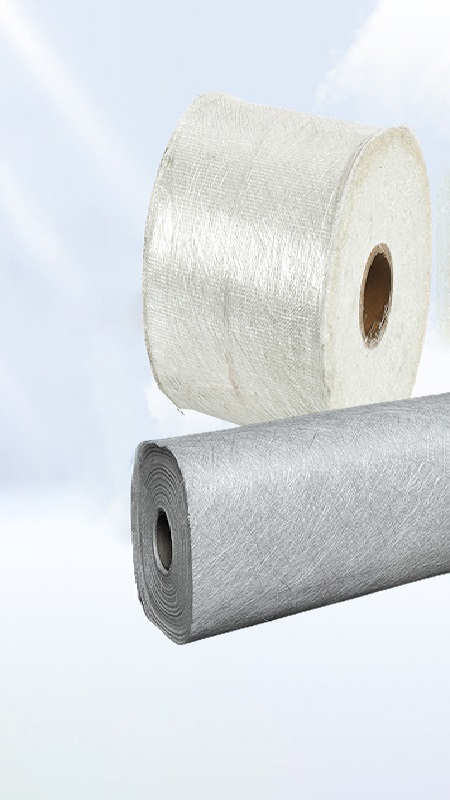
Chopped Strand Mat 450 GSM
Specifications
Chopped Strand Mat 450 GSM refers to a mat with a density of 450 grams per square meter, indicating a relatively high thickness and weight. This density means that the mat is denser and thicker compared to lower GSM variants, providing a greater volume of fiberglass per unit area. The increased density enhances the mat’s structural integrity and is suitable for applications where additional strength and durability are required. Typically, a 450 GSM Chopped Strand Mat is about 1.5 to 2.0 mm thick, depending on the specific product.
Uses
The 450 GSM Chopped Strand Mat is ideal for use in high-strength composite materials and various industrial applications. It is commonly employed in the production of reinforced plastics where significant strength and impact resistance are needed. This mat is particularly useful in marine applications, automotive parts, and construction, where it contributes to the durability and performance of the final product. Its higher density allows it to effectively fill molds and provide a strong, resilient layer in composite laminates.
Using Chopped Strand Mat 450 GSM offers several advantages. The increased density of the mat provides superior strength and impact resistance, making it suitable for demanding applications. This higher GSM also enhances the overall thickness and rigidity of the composite material, leading to improved mechanical properties and durability. Additionally, the 450 GSM mat helps in better bonding with resin, reducing the likelihood of print-through and ensuring a smooth, uniform finish in the final product. Benefits
Stitched Chopped Strand Mat
Definition
Stitched Chopped Strand Mat is a specialized type of Chopped Strand Mat where individual strands are stitched together using a binder thread. Unlike standard Chopped Strand Mat, which relies solely on resin binder to hold fibers in place, the stitched variant incorporates additional reinforcement through stitching. This process enhances the mat’s structural integrity and resistance to delamination. The stitching helps maintain the orientation of the fibers, providing a more stable and uniform material compared to non-stitched mats.
Advantages
The Stitched Chopped Strand Mat offers several notable benefits over standard Chopped Strand Mat. The primary advantage is its improved mechanical properties, including greater tensile strength and impact resistance. The stitching process enhances the mat’s ability to maintain fiber alignment, which contributes to better load distribution and structural performance. Additionally, the stitched mat exhibits superior performance in applications requiring complex shaping or where high-stress environments are involved. The enhanced stability provided by the stitching reduces the likelihood of fiber displacement and ensures a more consistent and reliable composite material.
Stitched Chopped Strand Mat is used in various applications where high performance and durability are crucial. It is commonly employed in industries such as marine, automotive, and aerospace, where complex shapes and high-stress conditions are prevalent. The mat is ideal for use in molds that require intricate forms or where additional strength is necessary to withstand operational stresses. Examples include components for boats, car parts, and structural elements in aircraft. The stitching also makes it suitable for applications where superior impact resistance and long-term durability are essential.Applications
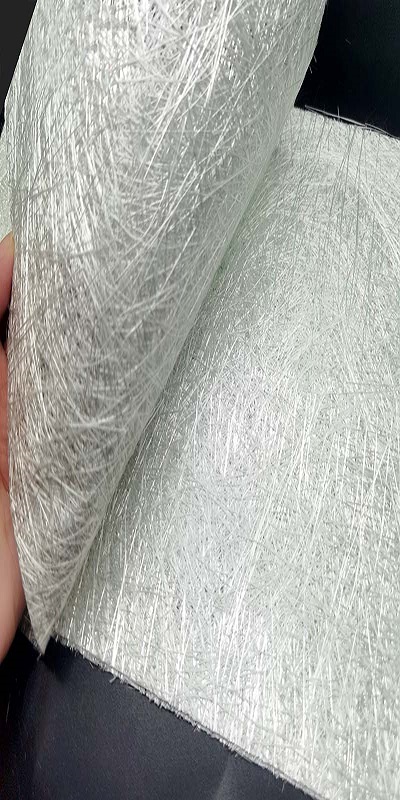
FAQs about Chopped Strand Mat
Can I use epoxy resin with chopped strand mat?
Which fiberglass cloth is strongest?
How many layers of chopped strand mat?
When to use a fiberglass mat?
How long does resin and matting take to dry?
What is chopped strand mat used for?
Laminating: As a base layer in the layup process to build thickness and add bulk to composite structures.
Marine Applications: Used in boat hulls and decks for structural reinforcement.
Automotive Panels: Adds strength and rigidity to automotive body panels.
Mold Making: Helps create durable molds for casting and forming materials.
Repairs: Often used in patching or reinforcing existing fiberglass parts or structures.
Can luse epoxy resin with chopped strand mat?
What is the strongest fibreglass?
Is steel stronger than fiberglass?
What is the difference between polyester and fiberglass mesh?
Fiberglass Mesh: Made from woven glass fibers, fiberglass mesh is stronger and more heat-resistant than polyester mesh. It is commonly used in construction for reinforcing plaster, stucco, and drywall joints, as well as in composite layups for added structural integrity.
What are the properties of chopped strand mat material?
Random Fiber Orientation: The fibers are randomly oriented, providing isotropic strength, meaning it has similar strength in all directions.
Thickness and Bulk: Chopped strand mat is often used to build thickness in a laminate, providing a smooth, even surface.
Flexibility: It is relatively flexible and can conform to complex shapes, making it suitable for various molding processes.
Ease of Use: It is easy to handle and cut, making it a popular choice for both professionals and DIY enthusiasts.
Cost-Effectiveness: Chopped strand mat is generally less expensive than woven fiberglass fabrics, offering a cost-effective solution for many applications.
Compatibility with Resins: It is commonly used with polyester, vinyl ester, and epoxy resins in composite construction.
How strong is a chopped strand mat?
Can you use chop strand mat with epoxy resin?
What type of fiberglass is strongest?
Which is stronger, fiberglass mat or fiberglass cloth?
What is the difference between epoxy and polyester resin?
Strength: Epoxy resin is stronger and provides better adhesion and durability.
Curing Time: Epoxy generally has a longer working time and slower curing process.
Water Resistance: Superior water resistance makes it ideal for marine applications.
Cost: Epoxy is more expensive than polyester resin.
Versatility: Works with a wide range of materials, including metals and certain plastics.
Flexibility: Less prone to cracking and shrinking.
Polyester Resin:
Strength: Polyester resin is less strong than epoxy, especially in terms of tensile strength.
Curing Time: Cures faster and has a shorter working time.
Water Resistance: Less resistant to water and chemicals, making it more suitable for non-marine applications.
Cost: Generally more affordable than epoxy resin.
Smell: Has a stronger odor due to styrene content.
Shrinkage: Prone to more shrinkage during curing, which can lead to stress cracks.
Does fiberglass cloth add strength?
How many layers of fiberglass to be strong?
What are the three types of fiberglass cloth?
Plain Weave: Features a simple over-under weave pattern, offering a good balance of strength and flexibility.
Twill Weave: Has a diagonal pattern, making it more pliable and easier to conform to complex shapes than plain weave.
Satin Weave: Also known as harness weave, it provides a smoother surface and is easier to drape over complex contours, offering higher strength in multiple directions.
What to use instead of fiberglass cloth?
Carbon Fiber: Offers superior strength and stiffness but is more expensive.
Kevlar: Provides excellent impact resistance and is lighter than fiberglass, though it is also more costly and harder to work with.
Basalt Fiber: Similar to fiberglass but with better thermal and chemical resistance, making it a viable alternative.
Natural Fibers: Materials like hemp, flax, and jute are eco-friendly alternatives, though they typically offer lower strength than synthetic fibers.
What is the advantage of chopped strand mat?
Cost-Effectiveness: It is generally less expensive than woven fiberglass cloth.
Ease of Use: It is easy to handle and conform to various shapes, making it suitable for complex molds and layups.
Bulk Building: Ideal for building thickness and providing a smooth finish in composite structures.
Uniform Strength: Provides consistent strength in all directions due to the random orientation of the fibers.
What is chopped strand mat made of?
What is the strength of fiberglass resin?
What is the difference between chopped strand mat and woven roving?
Structure: Made from randomly oriented glass fibers that are chopped into short lengths and held together with a binder. The fibers are not woven but instead are loosely held, creating a non-woven mat.
Strength: Provides uniform strength in all directions but generally has lower tensile strength compared to woven roving.
Use: Commonly used to build bulk and thickness in composite structures, and to provide a smooth surface finish. It’s often used as the first layer in a laminate to create a strong bond between layers.
Flexibility: More flexible and conformable, making it easier to apply to complex shapes.
Woven Roving:
Structure: Made from continuous glass fibers woven into a heavy fabric with a crisscross pattern, similar to traditional cloth.
Strength: Offers higher tensile strength and rigidity due to the aligned fibers in the weave. The strength is directional, being greater along the fibers' orientation.
Use: Used in applications requiring higher strength and rigidity, such as boat hulls, panels, and structural components.
Flexibility: Less flexible than chopped strand mat, making it more challenging to conform to complex shapes, but it provides superior structural reinforcement.
What is a woven roving mat used for?
Boat Building: Used in the construction of boat hulls, decks, and other marine structures where strong, durable reinforcement is needed.
Automotive Parts: Applied in the manufacture of automotive panels, chassis components, and body kits for enhanced structural integrity.
Composite Structures: Integrated into the layers of composite materials to provide reinforcement and improve the overall mechanical properties of the final product.
Industrial Applications: Used in the production of large tanks, pipes, and other industrial equipment that requires significant structural strength.
Where do you use woven roving?
Marine Industry: For the construction of boat hulls, decks, and other structural components that need to withstand harsh marine environments.
Automotive Industry: In the production of structural parts like body panels, undercarriages, and reinforced components that require both strength and light weight.
Aerospace: In certain aerospace components that require strong, lightweight reinforcement.
Construction: Used in the construction of structural elements, such as beams and panels, where high load-bearing capacity is needed.
How is chopped strand mat made?
Fiber Production: Continuous glass fibers are drawn from molten glass and then chopped into short lengths, typically ranging from 1 to 2 inches (25 to 50 mm).
Mat Formation: The chopped fibers are randomly oriented and sprayed or laid out onto a moving conveyor belt.
Binder Application: A binder, usually an emulsion or powder, is applied to the fibers to hold them together temporarily.
Curing: The mat passes through a curing oven, where the binder solidifies, creating a cohesive, non-woven mat.
Cutting and Rolling: The mat is then cut to the desired width and length, and rolled into large rolls for shipping and use.
What is the difference between continuous fiber and chopped fiber?
Length: Continuous fibers are long, unbroken strands of material that can be woven into fabrics or used in other forms of reinforcement.
Strength: Offers superior tensile strength and load-bearing capacity due to the uninterrupted nature of the fibers. Continuous fibers are used in applications where maximum strength is required.
Applications: Commonly used in aerospace, automotive, and high-performance composites where directional strength and rigidity are crucial.
Chopped Fiber:
Length: Chopped fibers are short lengths of fibers, typically a few millimeters to several inches long. These fibers are often randomly oriented and used in non-woven mats or as fillers in composite materials.
Strength: Provides more uniform but lower strength compared to continuous fibers. Chopped fibers are used to add bulk, improve surface finish, and provide reinforcement in multiple directions.
Applications: Used in chopped strand mats, fillers, and as reinforcements in injection molding and other composite applications where complex shapes are involved and directional strength is less critical.
What is the difference between continuous filament mat and chopped strand mat?
Structure: Made from long, continuous glass fibers that are randomly laid and bound together with a binder. The continuous fibers provide better strength and consistency compared to chopped fibers.
Strength: Generally stronger and more uniform than chopped strand mat due to the uninterrupted length of the fibers.
Flexibility: More flexible than chopped strand mat, making it easier to conform to complex shapes.
Chopped Strand Mat (CSM):
Structure: Made from short, chopped glass fibers that are randomly oriented and held together with a binder. The fibers are typically 1-2 inches in length.
Strength: Provides uniform strength in all directions, but it is generally less strong than continuous filament mat due to the shorter fiber lengths.
Flexibility: Less flexible than continuous filament mat, but still capable of conforming to moderately complex shapes.
What is the difference between chopped and continuous fiber?
Length: Short fibers, typically a few millimeters to several inches long.
Strength: Offers uniform strength in all directions but is generally weaker than continuous fiber due to the shorter length.
Applications: Used in non-woven mats, fillers, and composite materials where multi-directional reinforcement is needed.
Continuous Fiber:
Length: Long, unbroken strands of material that provide high tensile strength.
Strength: Superior strength, especially in the direction of the fibers, due to the continuous nature of the material.
Applications: Used in woven fabrics, reinforcement materials for composites, and other applications where high strength and rigidity are required.
What is a continuous filament mat used for?
Composite Layups: For creating strong, lightweight composite structures.
Automotive and Aerospace Parts: Where uniform strength and stiffness are crucial.
Marine Applications: Such as boat hulls and decks, where durability and resistance to environmental factors are important.
Molded Products: In the manufacture of molded fiberglass parts, providing consistent performance.
What is the difference between a cutting mat and a self healing cutting mat?
Surface: Typically made from hard plastic or rubber, offering a protective surface for cutting but can show cuts and wear over time.
Durability: Cuts made on a standard cutting mat may remain visible, leading to a worn surface.
Applications: Suitable for general cutting tasks but may not last as long as self-healing mats.
Self-Healing Cutting Mat:
Surface: Made from multiple layers of specialized materials that allow the mat to ""heal"" itself after being cut. The surface closes up small cuts, maintaining a smooth surface.
Durability: Lasts longer as the surface remains smooth and free from permanent grooves, even after repeated use.
Applications: Ideal for frequent cutting tasks, such as quilting, crafting, and precision work, where a smooth, long-lasting surface is needed.
What is the difference between chopped and woven carbon fiber?
Structure: Made from short carbon fibers that are randomly oriented.
Strength: Offers uniform strength in all directions but is generally less strong than woven carbon fiber.
Applications: Used as a filler or in non-woven mats for applications requiring multi-directional reinforcement.
Woven Carbon Fiber:
Structure: Made from continuous carbon fibers woven into a fabric. The weave pattern can vary, providing different levels of flexibility and strength.
Strength: Provides higher strength and rigidity, especially along the direction of the fibers.
Applications: Used in high-performance applications, such as aerospace, automotive, and sporting goods, where maximum strength and low weight are critical.
Which carpet fiber type is a continuous strand?
What is the difference between a staple Fibre and a continuous filament Fibre?
Length: Short fibers that are typically a few inches long.
Structure: Need to be spun into yarns, resulting in a fabric that can be soft and fluffy but might shed fibers.
Applications: Used in textiles like cotton or wool fabrics, where softness and comfort are important.
Continuous Filament Fiber:
Length: Long, continuous strands of fiber that can be woven directly into fabric.
Structure: Results in a smoother, stronger, and more durable fabric with less shedding.
Applications: Used in high-performance textiles, such as those made from nylon, polyester, or silk, where durability and a smooth finish are desired.
What is the difference between fiberglass cloth and mat?
Structure: Made from continuous glass fibers woven into a fabric. The weave pattern can vary, providing different levels of flexibility and strength.
Strength: Offers higher tensile strength and is used for structural reinforcement.
Applications: Used in applications requiring high strength and a smooth finish, such as boat building, automotive panels, and aerospace components.
Fiberglass Mat (Chopped Strand Mat):
Structure: Made from short, randomly oriented glass fibers held together by a binder.
Strength: Provides uniform strength in all directions but is generally less strong than fiberglass cloth.
Applications: Used to build thickness and provide bulk in composite layups, as well as to smooth surfaces and reinforce complex shapes.
What is chopped strand matting?
What is the difference between vinyl and rubber ESD mat?
Material: Made from vinyl, a synthetic plastic polymer.
Durability: Generally less durable than rubber but lighter and easier to clean.
Applications: Commonly used in electronics manufacturing, assembly lines, and areas where static control is important but heavy wear is not expected.
Rubber ESD Mat:
Material: Made from natural or synthetic rubber.
Durability: More durable and resistant to wear and chemicals than vinyl, making it suitable for heavy-duty environments.
Applications: Used in environments where both static control and durability are critical, such as in laboratories, industrial settings, and areas with heavy foot traffic.
What is the difference between filament tape and strapping tape?
Structure: Reinforced with continuous filaments (usually fiberglass) embedded in the tape, providing high tensile strength and resistance to tearing.
Applications: Used for bundling, reinforcing, and securing heavy items. Commonly used in packaging and shipping to secure boxes and pallets.
Strapping Tape:
Structure: Typically made from polypropylene or polyester, without the embedded filaments. It provides good tensile strength but is less resistant to tearing compared to filament tape.
Applications: Used for bundling and securing lighter packages and materials. It’s often used in situations where the tape needs to be cut easily or where extreme strength is not required.
Thank you for your interest in our products. To receive our pricelist or for any inquiries, please fill out the form below. We will get back to you within 24 hours.
